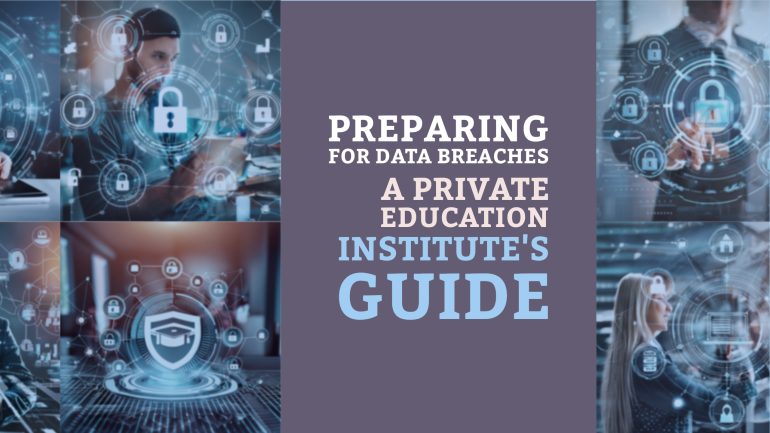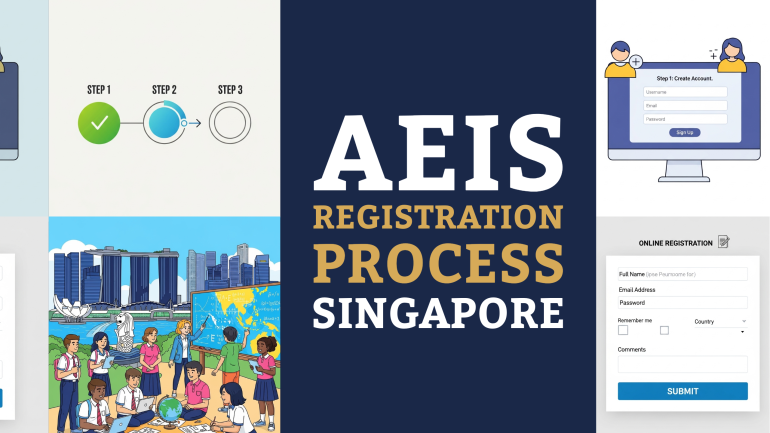Table of Contents
TL;DR: Preparing for Data Breaches: A Private Education Institute’s Guide
As a private education institute, you are a prime target for cybercriminals, with sensitive student and faculty data at risk of being compromised. The reality is that it’s no longer a question of if, but when a data breach will occur. Rather than waiting for disaster to strike, you can take proactive steps to prepare and respond. By understanding the threats, implementing robust security measures, and developing a comprehensive incident response plan, you can minimize the impact of a breach and protect your institution’s reputation. This guide will walk you through the imperative steps to ensure your private education institute is ready for the inevitable.
Identifying Potential Risks
Before you can prepare for a data breach, you need to identify the potential risks that your private education institute faces. This involves understanding the common threat vectors, vulnerabilities in your existing security measures, and potential weaknesses in your infrastructure.
Common Threat Vectors in Private Education Institutes
Risks from insider threats, such as current or former employees, students, or contractors, are a significant concern for private education institutes. These individuals may have access to sensitive data and systems, making it easier for them to exploit vulnerabilities or steal sensitive information.
Vulnerabilities in Existing Security Measures
Vulnerabilities in your existing security measures can provide an open door for attackers. For instance, outdated software and systems can be exploited by hackers, while weak passwords and authentication protocols can be easily bypassed.
Another area of concern is the lack of adequate encryption and secure data storage practices. If your institute is not using end-to-end encryption to protect sensitive data, it may be vulnerable to interception and theft. Additionally, if data is not properly backed up and stored, it may be lost in the event of a breach or system failure.
Developing a Comprehensive Incident Response Plan
Little can be more devastating to a private education institute than a data breach. The consequences can be far-reaching, affecting not only your reputation but also the trust of your students, parents, and staff. That’s why having a comprehensive incident response plan in place is crucial.
Establishing a Breach Response Team
An effective incident response plan begins with assembling a breach response team. This team should comprise individuals from various departments, including IT, legal, communications, and administration. Their collective expertise will enable your institution to respond swiftly and effectively in the event of a breach.
Defining Roles and Responsibilities
Incident response requires clear roles and responsibilities to avoid confusion and ensure a swift response. Identify key personnel and assign specific tasks, such as incident containment, notification, and remediation.
A well-defined incident response plan should outline the specific roles and responsibilities of each team member. For instance, the IT department may be responsible for containing the breach, while the communications team handles notifications to stakeholders. Clearly defining these roles will help prevent confusion and ensure a swift response. Moreover, having a designated leader to oversee the response effort will help maintain accountability and direction.
Implementing Preventative Measures
After identifying potential vulnerabilities, it’s crucial to implement preventative measures to minimize the risk of a data breach. As a private education institute, you must prioritize the security of your students’ and staff’s sensitive information.
Network Security and Access Control
Proactive measures such as implementing robust network security and access control can significantly reduce the risk of a breach. Ensure that your institute has a secure network architecture, including firewalls, intrusion detection systems, and secure authentication protocols. Limit access to sensitive data and systems to authorized personnel only, and regularly review and update access permissions.
Data Encryption and Backup Strategies
One of the most critical preventative measures is to encrypt sensitive data both in transit and at rest. This ensures that even if a breach occurs, the stolen data will be unreadable without the decryption key.
Strategies such as full-disk encryption, file-level encryption, and secure socket layer (SSL) encryption can be employed to protect your data. Additionally, implement a regular backup strategy to ensure that your data is recoverable in the event of a breach or system failure. It’s crucial to store backup data in a secure location, such as an encrypted cloud storage service or an offline storage device. This will prevent unauthorized access to your backed-up data.
Employee Education and Awareness
Now, more than ever, it’s crucial to educate your employees on the importance of data security and breach prevention. A well-informed staff is your first line of defense against potential threats.
Recognizing Phishing Attacks and Social Engineering
With the rise of sophisticated phishing attacks, it’s necessary that your employees can identify and report suspicious emails or messages. Teach them to be cautious of generic greetings, urgent requests, and misspelled URLs. According to a study, 91% of cyber attacks start with a phishing email, making it a critical skill for your staff to possess.
Best Practices for Password Management
Employee passwords are often the weakest link in your institution’s security chain. Ensure that your staff understands the importance of creating strong, unique passwords and keeping them confidential. A strong password should be at least 12 characters long and include a mix of uppercase and lowercase letters, numbers, and special characters.
Another crucial aspect of password management is regular password rotation. Encourage your employees to change their passwords every 60-90 days and avoid using the same password across multiple accounts. A study found that 63% of data breaches are caused by weak or stolen passwords, making this practice a vital component of your institution’s security strategy.
Vendor Risk Management
Not all data breaches occur due to internal vulnerabilities. In fact, many institutions have fallen victim to breaches caused by third-party vendors. As a private education institute, you rely on various vendors to provide services, from student information systems to payment processing. It’s crucial to recognize that these vendors can pose a significant risk to your institution’s data security.
Assessing Third-Party Vendor Security
On average, organizations use over 1,000 cloud services, many of which are provided by third-party vendors. When assessing the security of these vendors, you should evaluate their data handling practices, encryption methods, and incident response plans. It’s crucial to understand the level of access each vendor has to your sensitive data and ensure they have adequate security measures in place to protect it.
Contractual Requirements for Data Protection
One critical aspect of vendor risk management is ensuring that contractual agreements are in place to protect your institution’s data. You should require vendors to sign contracts that outline their obligations for data protection, including compliance with relevant regulations such as GDPR or FERPA.
Plus, these contracts should also specify the vendor’s responsibility in the event of a data breach, including notification procedures, incident response, and liability for damages. By having these contractual requirements in place, you can ensure that vendors are held accountable for protecting your institution’s sensitive data. Additionally, regular security audits and assessments can help identify potential vulnerabilities and ensure that vendors are meeting their contractual obligations. By taking a proactive approach to vendor risk management, you can significantly reduce the risk of a data breach and protect your institution’s reputation.
Incident Response Protocols
Despite having robust security measures in place, data breaches can still occur. That’s why it’s vital to have incident response protocols in place to minimize the impact of a breach and ensure a swift recovery.
Containment and Eradication Procedures
On detection of a breach, your incident response team should immediately activate containment protocols to prevent further data exfiltration. This may involve isolating affected systems, shutting down networks, or restricting access to sensitive data.
Notification and Disclosure Requirements
Disclosure of a breach is a critical step in maintaining transparency and trust with your students, faculty, and stakeholders. You must notify affected parties in a timely manner, providing clear information on the breach, the data compromised, and the steps you’re taking to rectify the situation.
Containment of a breach is crucial, but notification and disclosure are equally important. You must comply with relevant data breach notification laws and regulations, such as the General Data Protection Regulation (GDPR) or the Family Educational Rights and Privacy Act (FERPA). Failure to do so can result in severe penalties and reputational damage. Ensure your incident response plan includes procedures for notification and disclosure, including templates for breach notification letters and communication strategies for stakeholders.
Data Backup and Recovery Strategies
Many private education institutions understand the importance of having a robust data backup and recovery strategy in place to minimize the impact of a data breach. A well-planned strategy can help you quickly recover from a breach, reducing downtime and ensuring business continuity.
On-Site and Off-Site Backup Solutions
Restoration of critical data relies heavily on having both on-site and off-site backup solutions. On-site backups provide quick access to data in case of a system failure, while off-site backups ensure data is protected from physical damage or theft. It is necessary to have a 3-2-1 backup strategy, where you have three copies of your data, stored on two different types of media, with one copy located off-site.
Data Restoration and Business Continuity Planning
Backup data must be easily recoverable to ensure minimal disruption to your institution’s operations. A well-planned data restoration process can reduce downtime by up to 90%.
Understanding the importance of data restoration and business continuity planning is crucial. This involves identifying critical systems, data, and processes that are necessary to your institution’s operations. You should develop a plan that outlines the procedures for restoring data, recovering systems, and communicating with stakeholders in the event of a breach. Failing to have a business continuity plan in place can result in significant financial losses, damage to your reputation, and even legal liabilities. By having a plan, you can ensure that your institution can quickly respond to a breach, minimize the impact, and maintain trust with your students, staff, and stakeholders.
Communication Strategies
Unlike other aspects of data breach preparation, communication strategies require a delicate balance between transparency and caution. Effective communication is crucial in managing the crisis, maintaining trust, and minimizing reputational damage.
Internal Communication Protocols
To ensure a swift and coordinated response, you should establish clear internal communication protocols. This includes designating a central point of contact, setting up a communication chain, and defining roles and responsibilities. A well-rehearsed internal communication plan will enable your team to respond promptly and efficiently, reducing the risk of misinformation and confusion.
External Communication and Stakeholder Management
Management of external communication and stakeholder expectations is critical in maintaining transparency and trust. You should develop a plan to notify affected parties, including students, parents, and regulatory bodies, in a timely and appropriate manner.
It is necessary to be prepared to address the concerns and questions of various stakeholders, including the media. You should have a clear and concise message, consistent across all channels, to avoid confusion and misinterpretation. Consider having a dedicated webpage or hotline to provide updates and information, ensuring that stakeholders receive accurate and timely information. Failing to communicate effectively can lead to a loss of trust and reputational damage, making it even more challenging to recover from a data breach.
Compliance and Regulatory Requirements
To ensure your private education institute is prepared for a data breach, it’s crucial to understand the various compliance and regulatory requirements that govern data protection.
GDPR, HIPAA, and FERPA Compliance
With the increasing amount of sensitive data being collected and stored, your institution must comply with regulations such as the General Data Protection Regulation (GDPR), Health Insurance Portability and Accountability Act (HIPAA), and Family Educational Rights and Privacy Act (FERPA). These regulations require you to implement specific security measures to protect student and staff data, including encryption, access controls, and incident response plans.
State and Local Breach Notification Laws
One of the critical compliance requirements is adhering to state and local breach notification laws, which vary by jurisdiction. These laws dictate the timeframe and manner in which you must notify affected individuals in the event of a breach.
To navigate these laws effectively, it’s crucial to understand the specific requirements for your institution’s location. For instance, California’s Consumer Privacy Act (CCPA) gives consumers the right to request that businesses delete their personal information, while New York’s Stop Hacks and Improve Electronic Data Security (SHIELD) Act requires businesses to implement reasonable security measures to protect sensitive information. By familiarizing yourself with these laws, you can ensure your institution is prepared to respond quickly and effectively in the event of a breach, thereby minimizing the risk of legal and reputational consequences.
Cyber Insurance and Financial Planning
All private education institutions should consider investing in cyber insurance to mitigate the financial impact of a data breach. Cyber insurance can provide necessary support in the event of a breach, helping you to respond quickly and effectively to minimize damage.
Coverage Options and Policy Considerations
To ensure you have adequate protection, carefully review your cyber insurance policy to understand what is covered and what is excluded. Look for policies that provide coverage for first-party and third-party claims, including breach notification costs, legal fees, and regulatory fines.
Budgeting for Incident Response and Recovery
Budgeting for incident response and recovery is crucial to ensure you have the necessary funds to respond quickly and effectively in the event of a breach. Allocate a dedicated budget for incident response and recovery, considering factors such as forensic analysis, legal fees, and crisis communications.
A well-planned budget will enable you to respond swiftly and decisively in the event of a breach, minimizing the financial and reputational damage to your institution. According to a study by IBM, the average cost of a data breach in the education sector is $246 per record, highlighting the importance of adequate budgeting for incident response and recovery. By allocating a dedicated budget, you can ensure that you have the necessary resources to respond quickly and effectively, reducing the risk of long-term damage to your institution’s reputation.
Post-Breach Activities
Your response to a data breach doesn’t end with containment and eradication. In fact, some of the most critical steps take place after the immediate threat has been neutralized. This is where you shift your focus to understanding what happened, identifying areas for improvement, and implementing changes to prevent similar breaches in the future.
Forensic Analysis and Incident Review
On the heels of a breach, it’s vital to conduct a thorough forensic analysis to understand the scope, cause, and impact of the incident. This involves reviewing system logs, network traffic, and other relevant data to piece together the events leading up to the breach. This step is crucial in identifying vulnerabilities and determining the root cause of the breach.
Lessons Learned and Continuous Improvement
Improvement begins with a thorough debriefing of the incident response process. Identify what worked well and what didn’t, and use this information to refine your incident response plan.
Understanding the lessons learned from a breach is key to preventing future incidents. It’s vital to document all findings and recommendations, and to assign action items to specific teams or individuals. This ensures that necessary changes are implemented, and that your institution is better equipped to respond to future breaches. By continuously improving your incident response plan, you can reduce the risk of future breaches and minimize the impact of any incidents that do occur.
Maintaining Ongoing Vigilance
Once again, the key to preventing data breaches lies in being proactive. It’s not enough to simply respond to incidents as they occur; you must also maintain ongoing vigilance to stay ahead of potential threats.
Regular Security Audits and Risk Assessments
Security experts agree that regular security audits and risk assessments are imperative for identifying vulnerabilities and prioritizing remediation efforts. By conducting regular audits, you can identify areas where your defenses may be weak and take corrective action before a breach occurs.
Staying Current with Emerging Threats and Technologies
To stay ahead of potential threats, you must stay current with emerging trends and technologies. This includes staying informed about new types of malware, phishing scams, and other cyber threats, as well as learning about new security tools and technologies that can help you protect your institution.
Plus, staying current with emerging threats and technologies also means being aware of the latest regulations and compliance requirements. For example, the General Data Protection Regulation (GDPR) requires institutions to implement robust security measures to protect personal data. By staying informed about these requirements, you can ensure that your institution is in compliance and avoid costly fines and penalties.
Collaboration and Information Sharing
Keep in mind that preparing for data breaches is not a solo effort. Collaboration and information sharing with other organizations and experts in the field are crucial in staying ahead of potential threats.
Industry Partnerships and Threat Intelligence
Partnerships with other private education institutes, industry associations, and threat intelligence providers can provide you with valuable insights into emerging threats and best practices in incident response. By sharing threat intelligence, you can gain a better understanding of the tactics, techniques, and procedures (TTPs) used by attackers, enabling your institution to proactively defend against potential breaches.
Participating in Incident Response Communities
To stay informed about the latest incident response strategies and tactics, consider participating in incident response communities, such as the Higher Education Information Security Council (HEISC) or the Open Web Application Security Project (OWASP).
For instance, these communities often share anonymized incident response reports, which can provide valuable insights into the incident response strategies employed by other organizations. Additionally, participating in these communities can give you access to expert advice and guidance from experienced incident responders, helping you to refine your incident response plan and improve your overall readiness.
Summing up
Now that you’ve taken the first step in preparing your private education institute for potential data breaches, you’re better equipped to protect your students’, faculty members’, and staff’s sensitive information. By implementing robust security measures, developing an incident response plan, and fostering a culture of cybersecurity awareness, you’ll significantly reduce the risk of a breach and minimize its impact if one occurs. Bear in mind, preparation is key to mitigating the devastating consequences of a data breach, and your proactive approach will safeguard your institution’s reputation and integrity.
FAQ
Q: What are the common types of data breaches that private education institutes should be prepared for?
A: Private education institutes should be prepared for various types of data breaches, including phishing attacks, ransomware attacks, insider threats, lost or stolen devices, and third-party vendor breaches. These types of breaches can result in unauthorized access to sensitive student and faculty data, financial information, and other confidential records. It is necessary to have a comprehensive incident response plan in place to quickly respond to and contain these types of breaches.
Q: What are the key elements of a data breach incident response plan for private education institutes?
A: A data breach incident response plan for private education institutes should include key elements such as identification and containment of the breach, assessment of the breach’s scope and severity, notification of affected parties, eradication of the root cause, recovery of systems and data, and post-incident activities such as lessons learned and plan improvement. The plan should also designate roles and responsibilities, establish communication protocols, and provide training for personnel.
Q: How can private education institutes ensure compliance with data privacy regulations in the event of a breach?
A: Private education institutes can ensure compliance with data privacy regulations such as FERPA, HIPAA, and GDPR by having a robust incident response plan in place, conducting regular risk assessments and audits, implementing encryption and access controls, providing training to personnel, and having a breach notification process that meets regulatory requirements. Institutes should also have a designated Data Protection Officer (DPO) to oversee data privacy compliance.
Q: What are some best practices for preventing data breaches in private education institutes?
A: Some best practices for preventing data breaches in private education institutes include implementing strong password policies, keeping software and systems up-to-date, using encryption and secure protocols, conducting regular security audits and penetration testing, providing security awareness training to personnel, and limiting access to sensitive data. Institutes should also implement a culture of security and privacy, and have a incident response plan in place in case of a breach.
Q: How can private education institutes balance the need for data sharing and collaboration with the need for data security and privacy?
A: Private education institutes can balance the need for data sharing and collaboration with the need for data security and privacy by implementing secure data sharing protocols, using encryption and access controls, and having clear policies and procedures for data sharing. Institutes should also conduct risk assessments and due diligence on third-party vendors, and have a incident response plan in place in case of a breach. Additionally, institutes should provide training to personnel on secure data handling practices and ensure that data sharing is limited to only those who need access.





